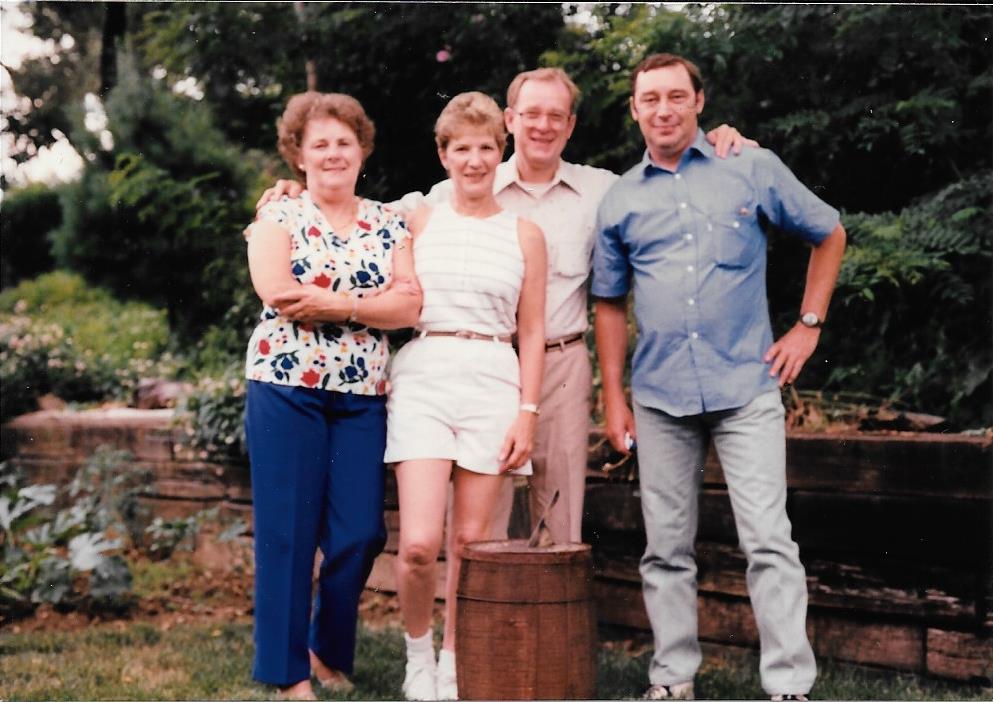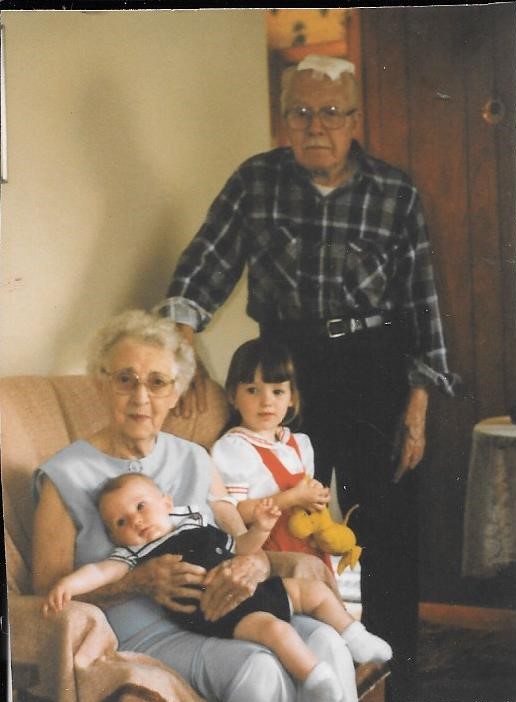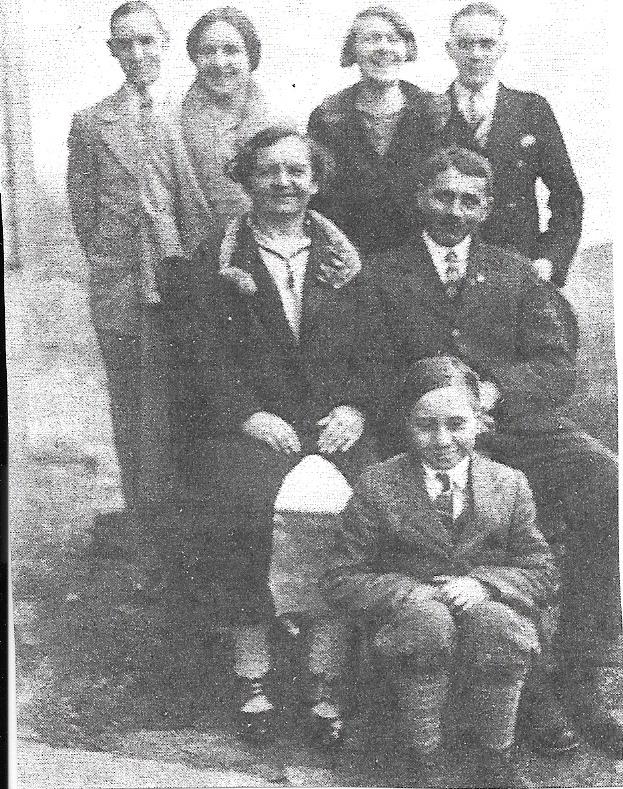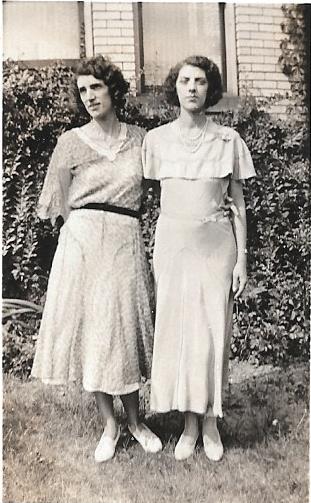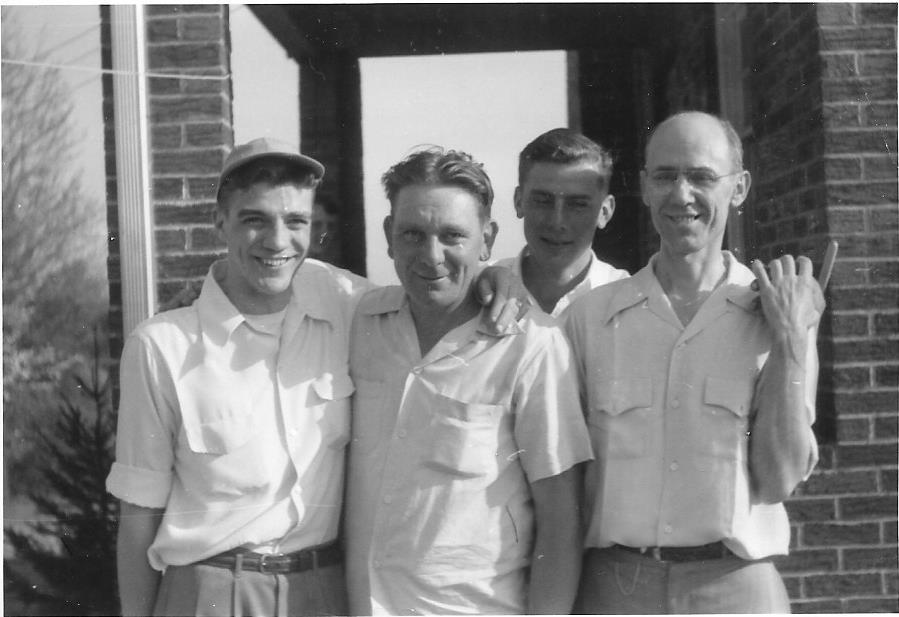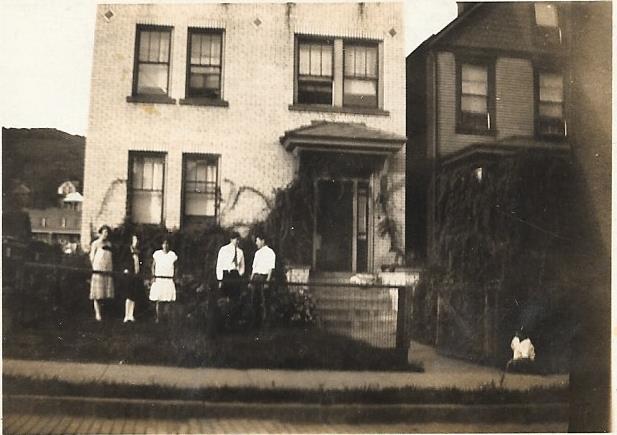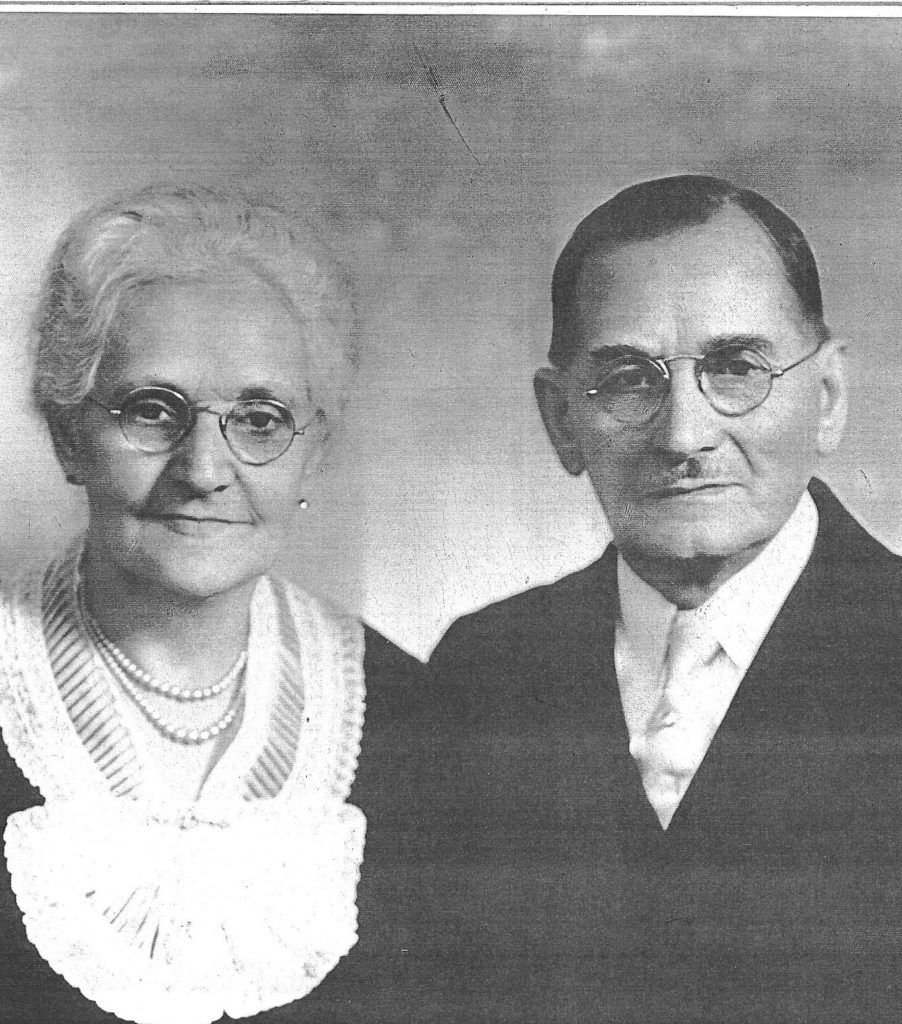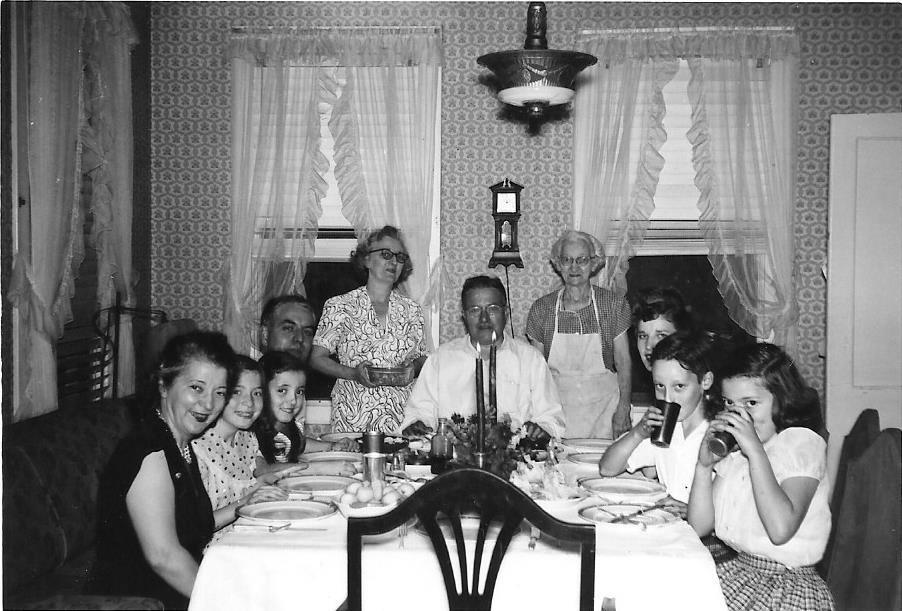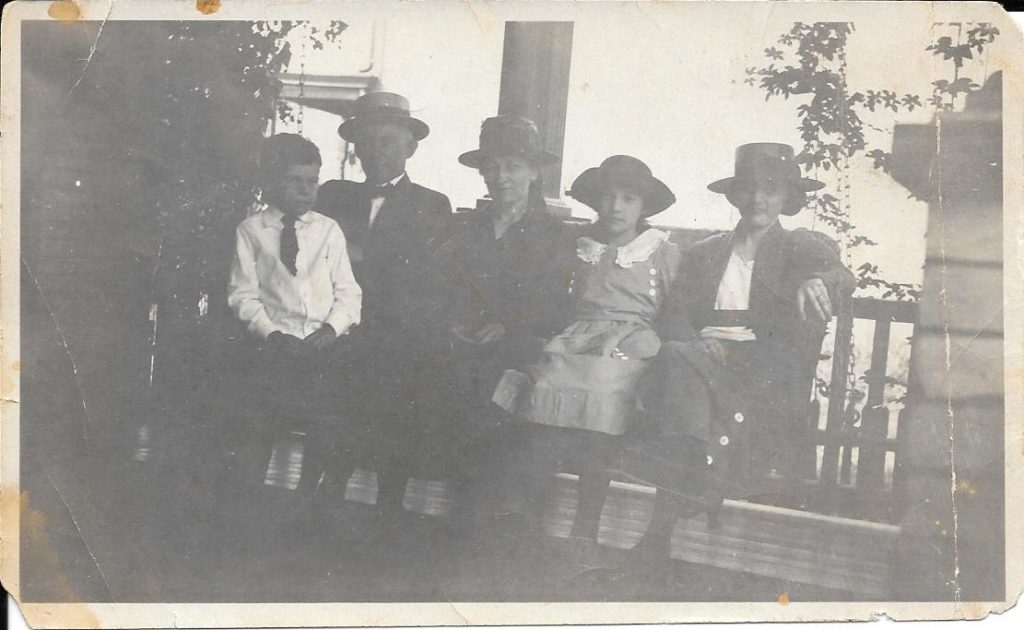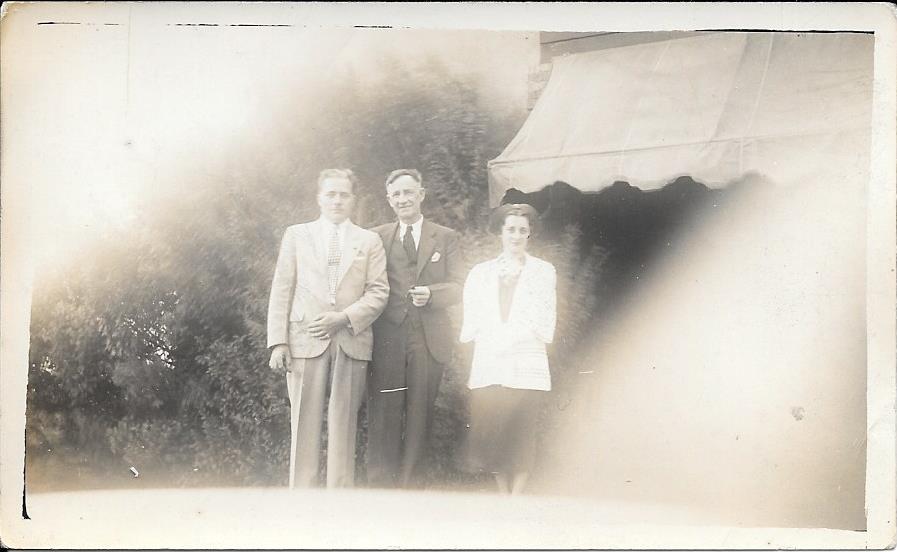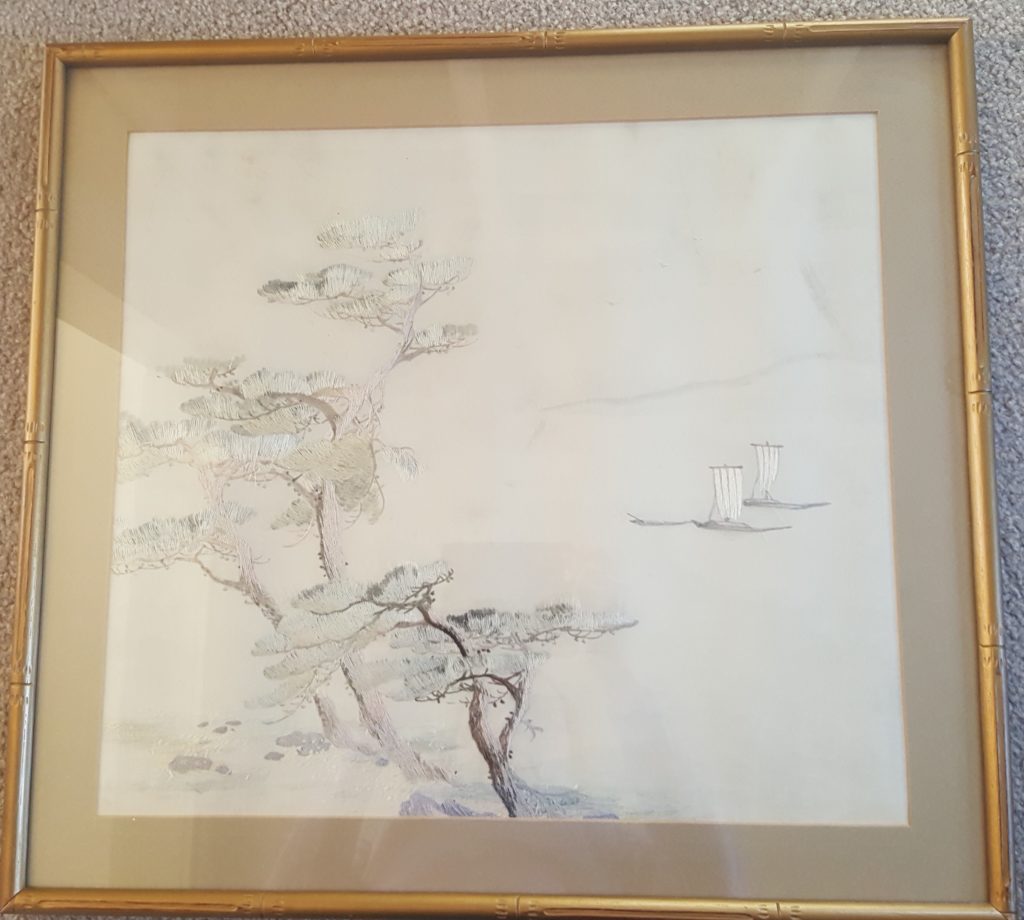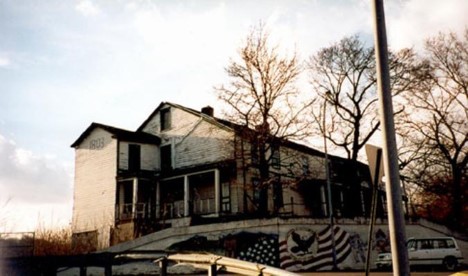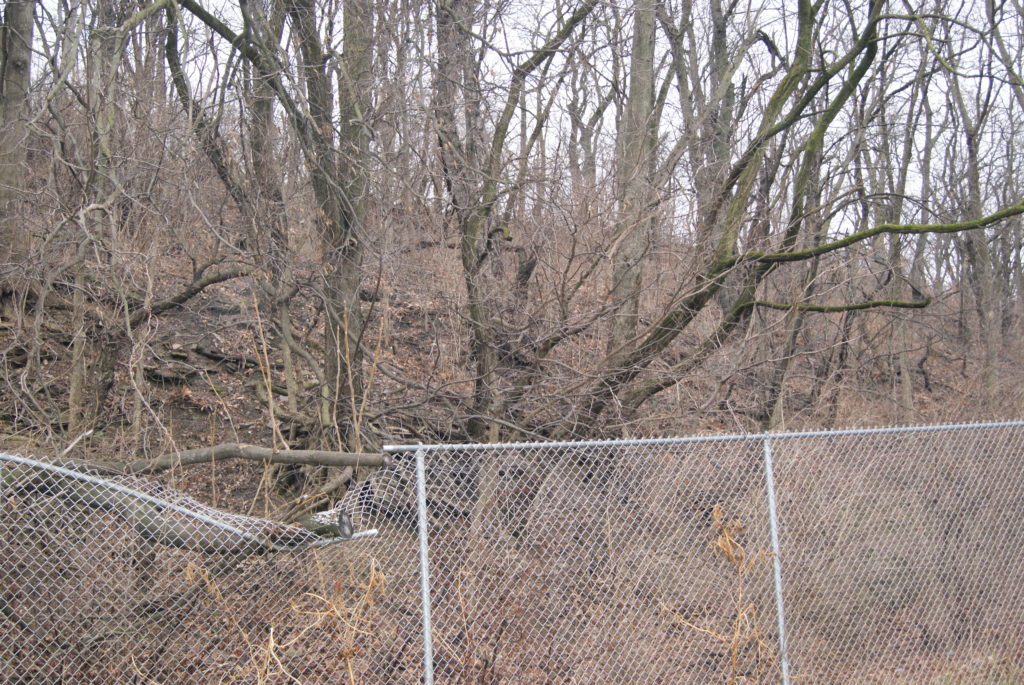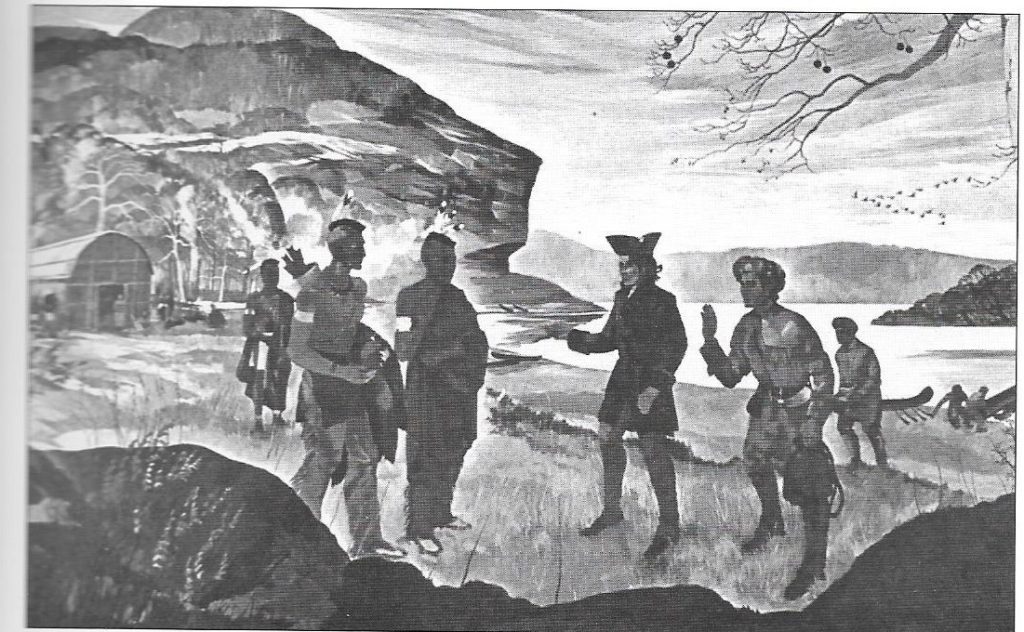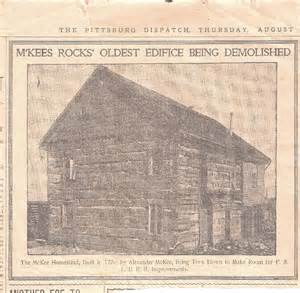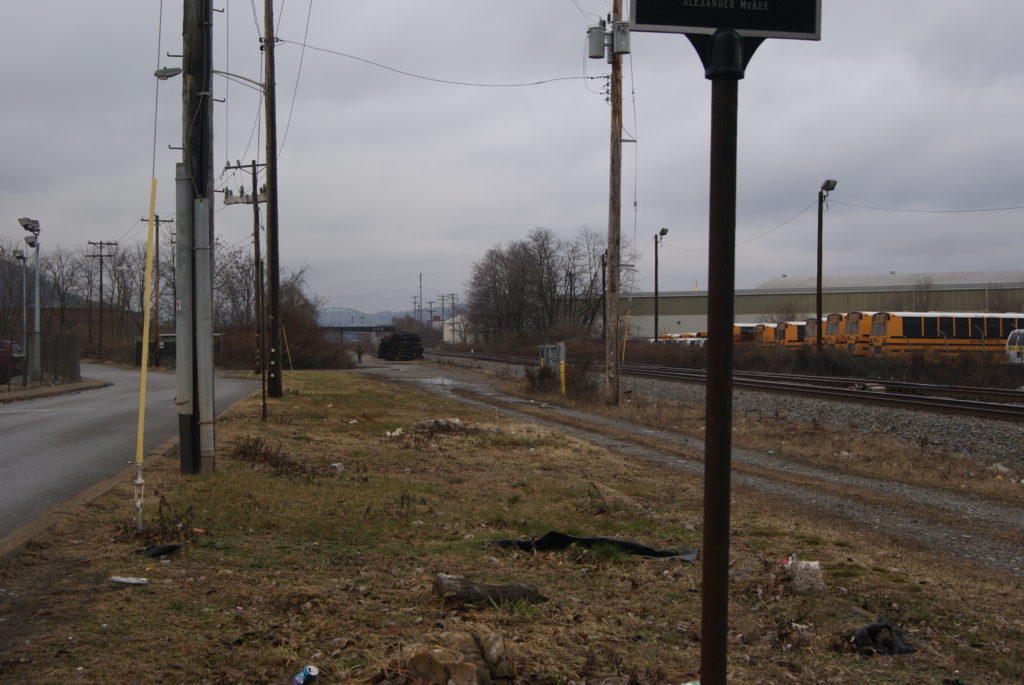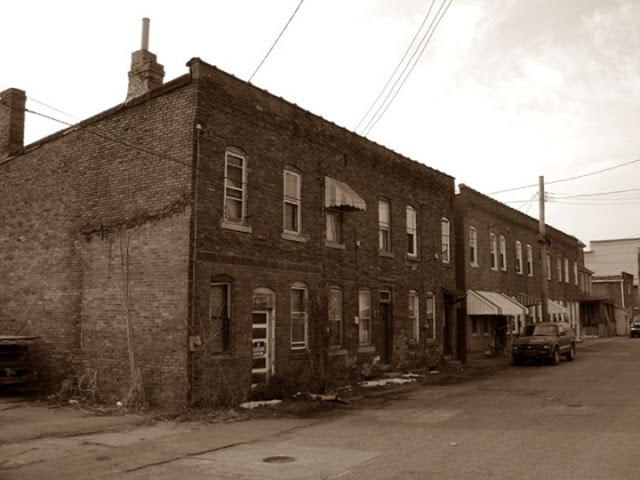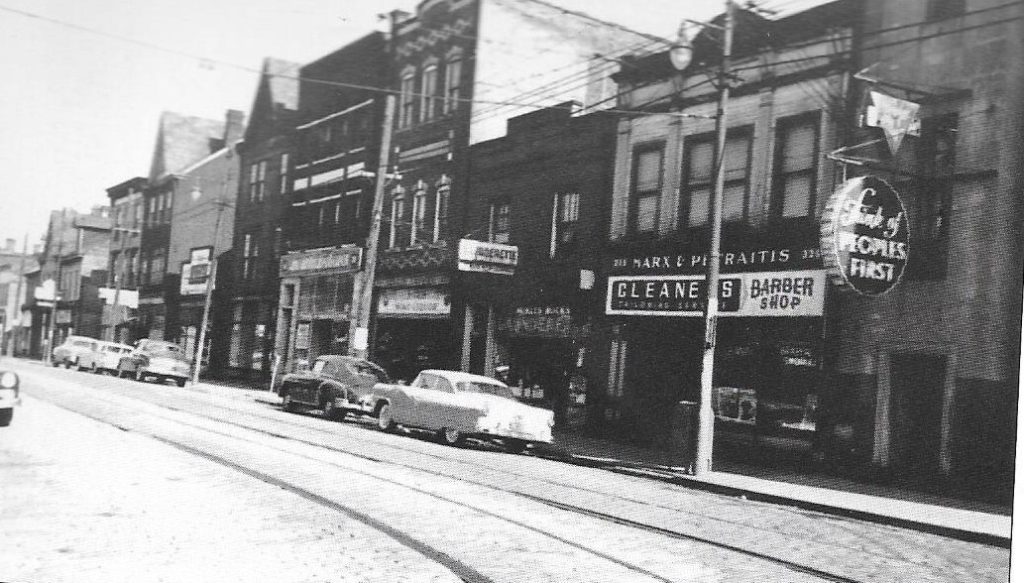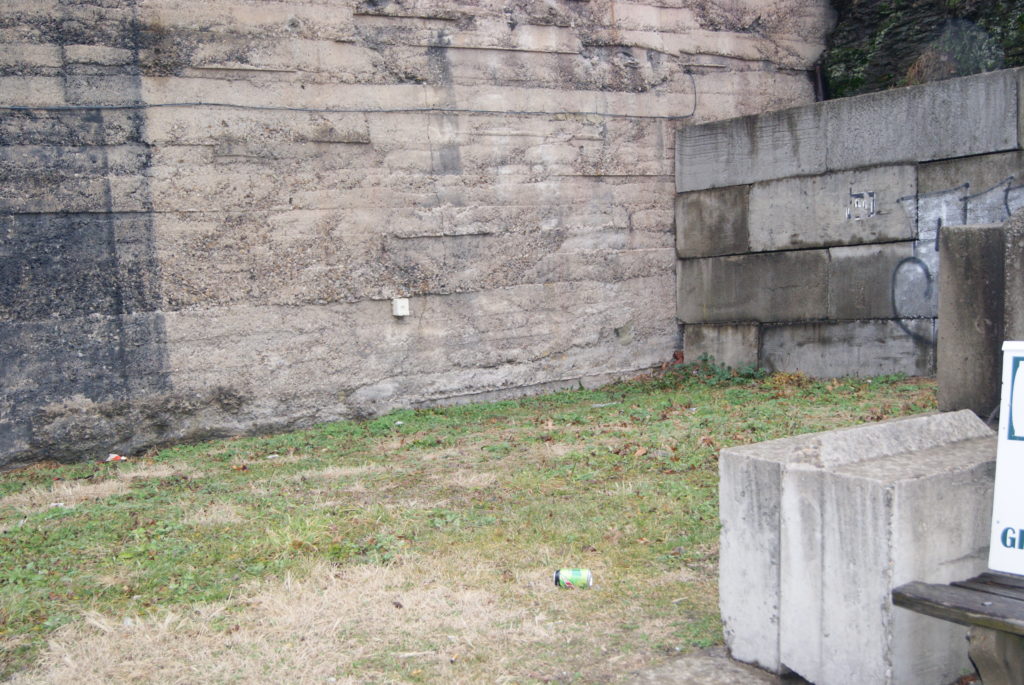In my last post, I promised a tribute to my grandmother, Mary Angela Grant Yaggi, whose personality and spirit shaped my own.
Born in 1901, her life spanned nearly the whole of the 20th century. She lived to see the Wright Brothers’ first flight, the first footsteps on the moon and the launch of the Hubble space telescope. She was a young flapper in the jazz age and the harried matriarch of a large family during the Depression. When she was born, her hometown bustled with industry. Her husband toiled over ledger books and a 20-pound adding machine to make a living. By the time she died, her grandchildren carried computers in our backpacks, and McKees Rocks was born was battered, hollowed-out ghost of its glory days.
Early life
Grandma began her life in the Norwood neighborhood of McKees Rocks in September 1901, the oldest of four children of Michael and Margaret Grant.
When she was 12 or 13, her little sister, Roberta, died. Family lore has it that, as she died, Roberta cried out, “Mother! I see Jesus!” Roberta became a sort of family saint (and is my mother’s namesake). Her mother kept the nightgown she died in, and she and my grandmother used to cut little scraps of the nightgown to pin onto the clothing of anyone in the family who was sick.
Mary and her surviving siblings, Helen and Jack, had the kind of childhood that children of railroad laborers in Norwood had in the early 20th century: plain food, homemade clothing, Mass every Sunday and Holy Day without exception. According to the history of McKees Rocks and Stowe Township, the Norwood and West Park neighborhoods were still semi-rural during grandma’s childhood, and many housewives helped feed their families by planting small gardens and raising a pig each year. Grandma never mentioned her mother doing either of those, but I come from a line of doughty little women, so it wouldn’t surprise me in the least.
Grandma grows up
We have several pictures of grandma as a little girl, but I chose the two below to share, because they so perfectly illustrate two sides to her personality. The women in my family love pretty clothes. In the picture on the left, you can see that my great-grandmother was turning Grandma into a fashion plate from an early age. Grandma was the child of a laborer, but her mother made sure she dressed like a spoiled little princess in this portrait of her at age 4. The portrait on the right, taken around the same age but unposed, shows her fierce personality. She’s the barefoot little girl on the right with the I-WILL-see-the manager-this-instant look on her face. Like me, grandma was a classic firstborn: opinionated, determined and bossy, from toddlerhood to dotage.
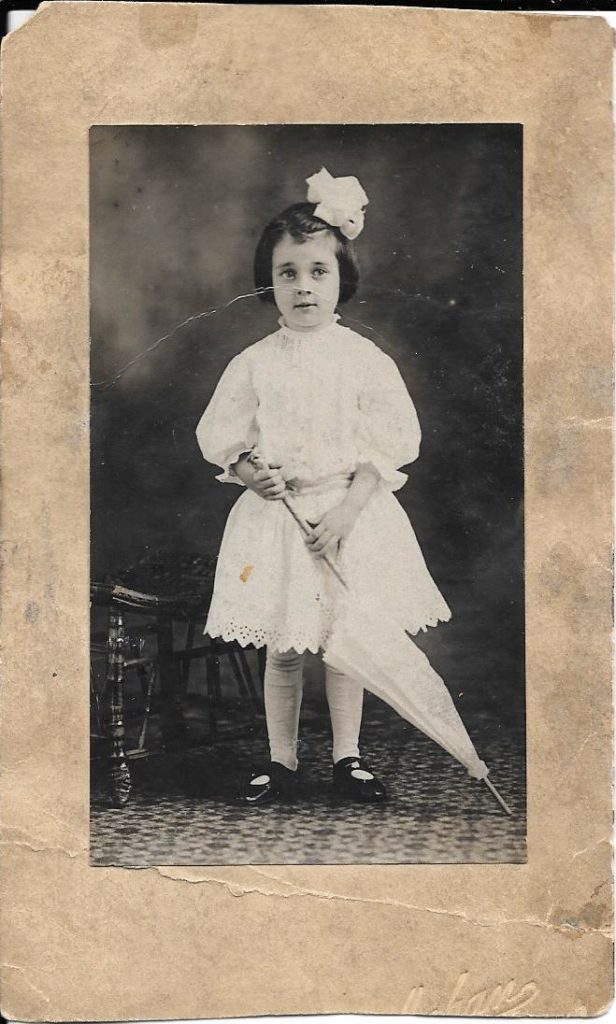
Fashion plate right from the start. 
DO.NOT.MESS.WITH.MARY.
As she matured, grandma’s interest in beautiful clothing grew. In the photograph below, she felt very proud of the fur-trimmed coat she was wearing. She must have sent the photo to someone because she typed on the back, “I don’t want you to look at the face, just the coat.” The photo probably dates to about 1919, when grandma had finished school and started earning her own money. She took advantage of her new freedom and income to do herself up as the Zelda Fitzgerald of McKees Rocks. I remember her bragging about being the first girl in the Rocks to bob her hair and wear short skirts with unbuckled galoshes. Yes, that was a thing; see this New York Times article from 1922.
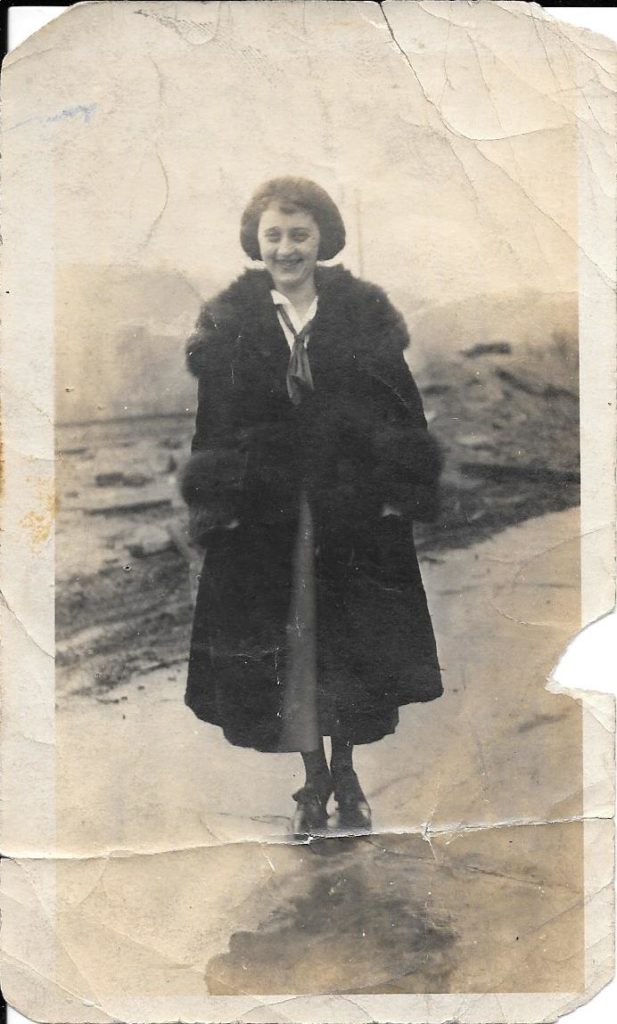
The young Mrs. Yaggi
There’s a picture of my grandparents taken right before their marriage, that I’ve seen but haven’t been able to locate again. They’re on a picnic with friends in the early 1920s. Grandma is dressed in full flapper regalia, five feet and 100 pounds of sass, energy and self-confidence. She looks like a girl who would be up for just about anything, the crazier the better. Grandpap looks more serious. The look on his face expresses amused, fatherly indulgence. “Don’t worry,” he seems to say to the camera, “I’ll tame the little spitfire.”
But grandma was untamable by any mere human being. It took the hard realities of life in the 1930s and 40s to bring out her deeper qualities of character.
My grandparents married in 1923. Grandpap had a good job in the Duquesne Light Accounting Department, so they lived comfortably. They move into a brand-new house on Wayne Avenue in McKees Rocks, pictured below as I remember it in the 1960s, with gorgeous spirea bushes blooming in front of their porch. But their first baby died at birth, and grandma didn’t bear a living child until 1929.

After that, came two more children in rapid succession, the Depression, and first grandma’s destitute uncle and then her widowed mother moving in with them. Grandpap’s wages were repeatedly cut during the Depression, and grandma struggled to keep all those bellies full. Then, right at the start of WW2, came a surprise fourth baby. My mom remembers that Grandma was mortified by her pregnancy at the advanced age of 40, and hid it for as long as she could – under very fashionable clothing, I have no doubt.
Rising to the demands of life
Grandma faced those mid-life challenges with her characteristic energy and gumption. She learned to pinch a penny until it squealed. She bought whatever meat was on sale, didn’t hesitate to buy second-hand, and had little patience for children who expected indulgences as their right. Like her own mother, she took to her sewing machine to make sure that her children wore nice clothing. The picture directly below shows her three older children on Easter 1937. Grandma made every stitch of clothing they wore, excepting undergarments and socks but including hats. My mother’s wedding gown and veil were also sewn by grandma (see my parents’ wedding picture below).
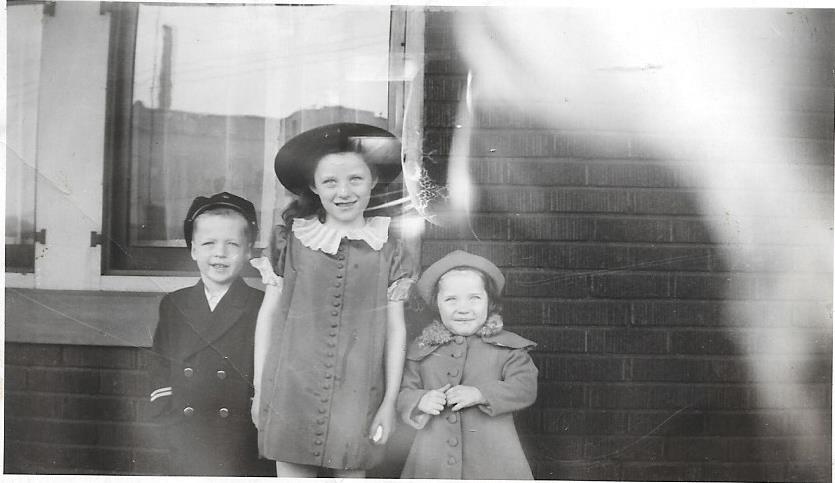
Fred, Joan & Roberta Yaggi, beautifully dressed by their mother.
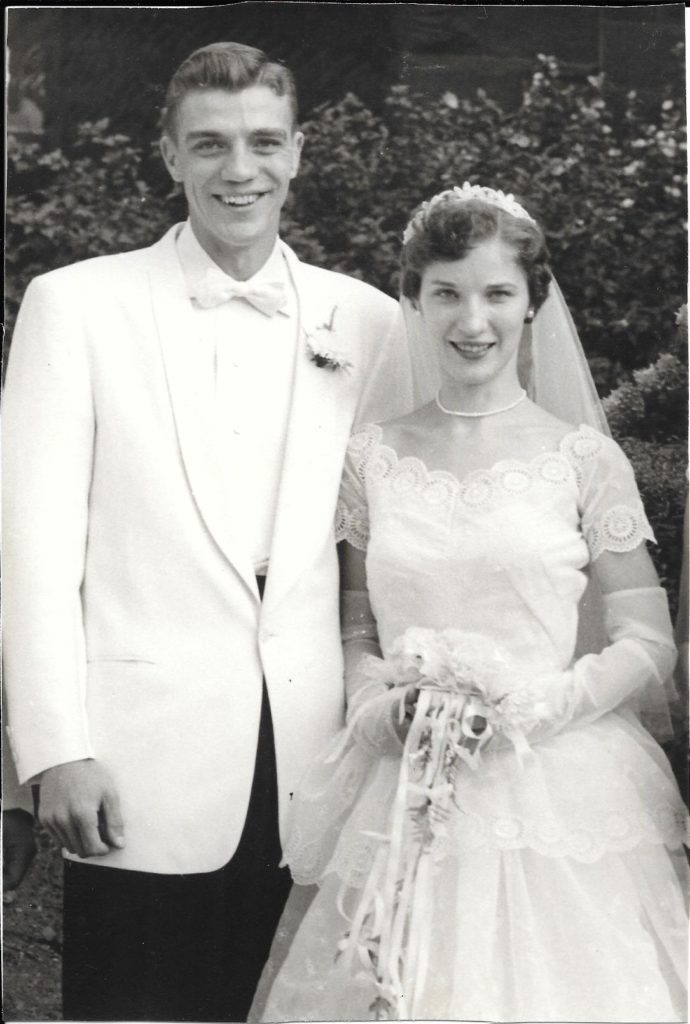
Grandma also became a model of good works. She sewed First Communion dresses for little girls whose families couldn’t afford them. The elderly man who still lives next door to her house remembers to this day the lemon meringue pie she delivered to his family to welcome them to the neighborhood. A neighbor girl named Puggy became her project in the early 1960s. Puggy, a chubby teenager with bad skin, came from a troubled family. Grandma sewed pretty clothes for Puggy, and paid her a few dollars a week to hang around the house and help a little in the kitchen, hoping to keep her out of trouble.
The grandma I remember
My own parents had three children and – like most families in the 1960s – only one income, which just covered the necessities. Every luxury I had was provided by my grandmother: 5th birthday party on the Good Ship Lollipop, outings to the baroque movie theaters downtown to see The Sound of Music and Mary Poppins.
Grandma also provided most of my clothing. My sister and I always had pastel-colored Easter coats and matching hats, made by grandma. For my first day of kindergarten, I was probably the last little girl in the United States to ever wear a pinafore (you probably don’t even know what that is; look it up here). Grandma made me a navy-blue dress with white collar and cuff trim, and a white pinafore embroidered with a proud-stepping orange rooster on the pocket. She could also be counted on for a dime for a vanilla ice-cream cone from Tastee Freeze or some penny candy from Zimmermans, treats unheard of in my parents’ penny-pinched household.
Grandma absolutely did not tolerate bad behavior, though. If an elderly person got on the bus after us, she only had to nudge me briskly to get me to stand and offer my seat. She tolerated not a single second of whining,and had no problem utterly ignoring any level of pouting or complaining, so we quickly learned not to bother trying. Grandma was the absolute boss and we did not cross her.
Later Life
She’d probably have been at home in the 21st century as a career woman, but her era didn’t open that door, so she channeled her endless energy into creative pursuits. In addition to the sewing and pie-baking that she was known for, she embroidered, painted china, and hand-made the kind of elaborate egg tree that you can purchase as an Easter decoration in any Joann Fabrics today.
We gathered at her home for every holiday – and I do mean EVERY holiday, not just Thanksgiving, Christmas and Easter. She hosted backyard cookouts for Memorial Day, Independence Day and Labor Day. The house was always crowded with her own children and grandchildren, her sister’s family, and random grad students from foreign countries that my Uncle Fred brought home.
Grandma was a praying woman all her life, and she needed to be. She knew great sorrow. Her mother and uncle died under her roof. She endured the shame (in those days) of a daughter’s out-of-wedlock pregnancy and the sorrow of giving up the baby for adoption to distant relatives in New England. She watched her uncle, her brother, three nieces, one of her sons and both of her sons-in-law succumb to alcohol addiction.
Old age
Yet not until advanced old age did she lose her energy or her spirit of fun, and she certainly never lost her sense of fashion. I remember running into her downtown when she was about 80 years old and I was a young career woman in my 20s. I was out to lunch with some girlfriends from work and there, walking through Market Square, was an elderly lady who looked like she’d emerged from the cover of Vogue. Her tiny figure was held erect, her silvery hair perfectly styled, and she wore a fur hat, a fur-trimmed coat, stockings and French-heel pumps. “Grandma!” I called, and I was so proud to introduce my friends to my elegant grandmother.
But my very favorite grandma memory took place several years later. In her 80s, we lost her slowly to dementia. The time came when she still remembered her children but not her grandchildren. I took her grocery shopping one day and she asked me who I was. “I’m Kathy,” I reminded her, “your daughter Bobbie’s daughter.” The next time she talked to my mother she said, “Oh, Bobbie, I met your girl. She’s very nice.” It warmed my heart to know that my grandmother liked me even when she didn’t remember that I belonged to her.
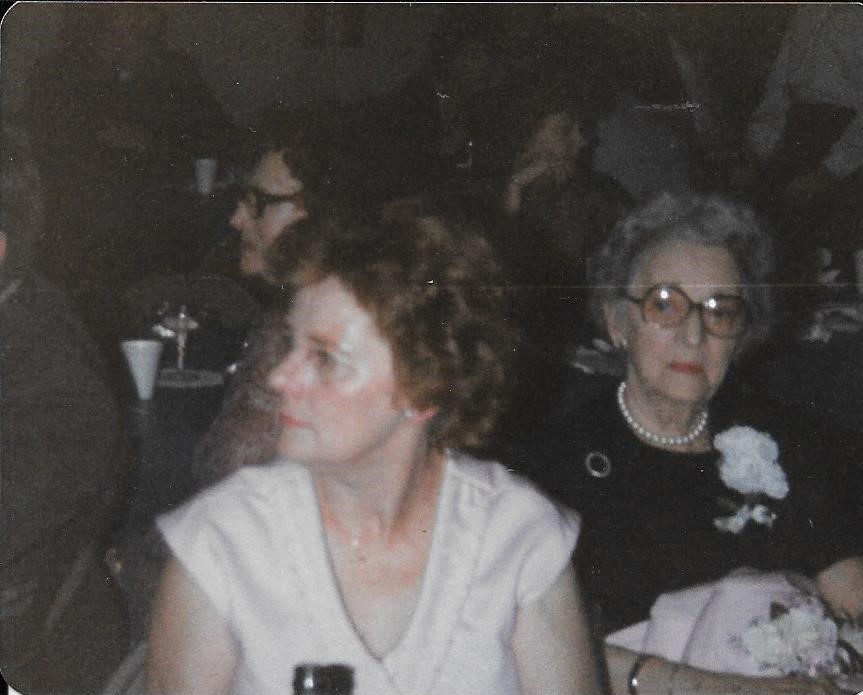
Grandma’s heart stopped in her sleep in August of 1998, shortly before her 97th birthday. As a pie-baker, a homemaker, a mother, a grandmother, a Christian and a woman who puts on clothes every morning, Mary Angela Grant Yaggi is the standard by which I measure myself.
